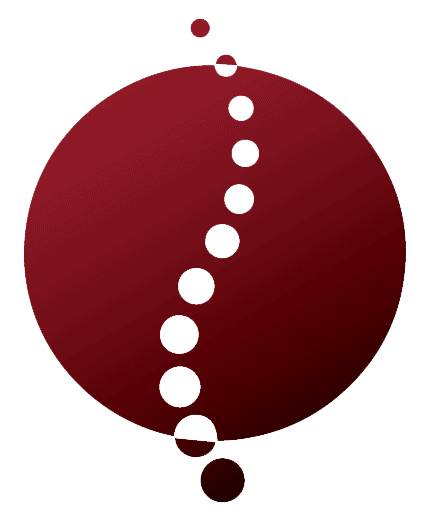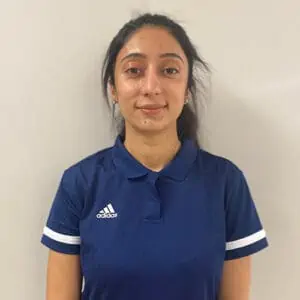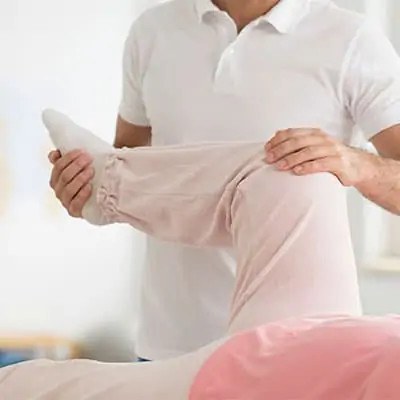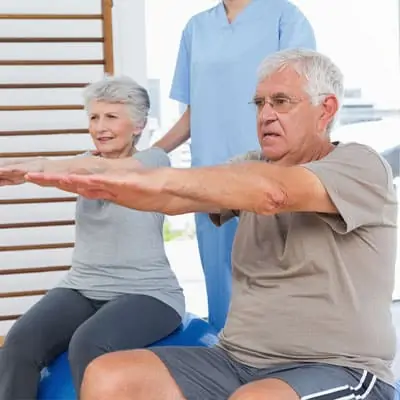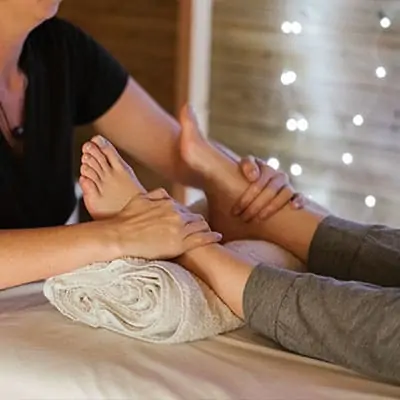Understanding Parkinson’s Disease Rehabilitation
Importance of Rehabilitation in Parkinson’s Disease
Parkinson’s disease rehabilitation is crucial for managing the symptoms and improving the quality of life for those affected by this neurodegenerative condition. Given the progressive nature of Parkinson’s disease, rehabilitation provides essential support in mitigating motor and non-motor symptoms, enhancing physical capabilities, and promoting independence.
Rehabilitation plays a key role in addressing challenges like tremors, rigidity, bradykinesia, and postural instability. With tailored interventions, patients can achieve significant improvements in their functional abilities and overall well-being. These interventions also help in preventing complications such as falls and secondary musculoskeletal issues.
Goals of Parkinson’s Disease Rehabilitation
The primary objectives of rehabilitation for Parkinson’s disease focus on maintaining and enhancing the individual’s functional independence, mobility, and daily living activities. We aim to achieve these goals through a multidisciplinary approach that encompasses various therapeutic modalities.
Goals of Rehabilitation:
- Improve Mobility: Enhancing walking abilities, balance, and coordination through targeted exercises and balance and gait training.
- Increase Strength: Strengthening and conditioning muscles to support movement and reduce the risk of falls.
- Enhance Flexibility: Stretching and flexibility exercises to reduce rigidity and improve range of motion.
- Optimize Functionality: Assisting with activities of daily living (ADLs) to promote self-care and independence.
- Promote Neuroplasticity: Engaging in neuroplasticity training to encourage the brain’s ability to adapt and reorganize its functions.
- Educate and Empower: Providing education on disease management and techniques to cope with symptoms.
| Goal | Objective |
|---|---|
| Improve Mobility | Enhance walking, balance, coordination |
| Increase Strength | Strengthen muscles, reduce fall risk |
| Enhance Flexibility | Reduce rigidity, improve range of motion |
| Optimize Functionality | Assist with ADLs, promote independence |
| Promote Neuroplasticity | Enable brain adaptation, functional reorganization |
| Educate and Empower | Provide disease management education |
Further insights into the comprehensive elements of neurological physiotherapy can be found in our articles on stroke rehabilitation, multiple sclerosis physiotherapy, and spinal cord injury rehabilitation.
This approach ensures that patients receive holistic care tailored to their unique needs, promoting a better quality of life and empowering them to manage their condition more effectively.
The Role of Neurological Physiotherapy
Overview of Neurological Physiotherapy
Neurological physiotherapy focuses on the treatment and management of movement disorders that arise from neurological conditions such as Parkinson’s disease, multiple sclerosis, stroke, and others. In Parkinson’s disease rehabilitation, neurological physiotherapy plays an essential role in helping individuals improve their mobility, balance, and overall quality of life.
The goal of this type of physiotherapy is to address the specific challenges faced by individuals with Parkinson’s. This can include muscle rigidity, tremors, postural instability, and bradykinesia (slowness of movement). By using a combination of tailored exercises and therapeutic techniques, we can help manage these symptoms and promote better functional movement.
For more information on neurological conditions, you can visit our sections on stroke rehabilitation or multiple sclerosis physiotherapy.
Benefits of Physiotherapy for Parkinson’s Disease
Physiotherapy offers numerous benefits for individuals dealing with Parkinson’s disease. These benefits are not only limited to physical improvements but also extend to overall well-being and mental health. Here are some key benefits:
- Improved Mobility and Flexibility: Physiotherapy exercises are designed to enhance flexibility and mobility, which can help reduce muscle stiffness and immobility.
- Enhanced Balance and Coordination: Specialized exercises focus on improving balance and coordination, which are often affected in Parkinson’s patients. This can significantly reduce the risk of falls and injuries. For more on balance training, see balance and gait training.
- Reduced Tremors and Muscle Rigidity: Regular physiotherapy sessions can help diminish the severity of tremors and reduce muscle rigidity, making everyday activities easier to perform.
- Better Posture and Gait: Physiotherapists work on correcting posture and improving gait patterns, helping individuals walk more naturally and comfortably. Check out our article on gait training for further reading.
- Enhanced Mental Health: Exercise and physical activity can have a positive impact on mental health, reducing symptoms of depression and anxiety commonly associated with chronic conditions.
| Benefit | Outcome |
|---|---|
| Improved Mobility | Enhanced flexibility, reduced stiffness |
| Enhanced Balance | Decreased fall risk |
| Reduced Tremors | Eased daily activities |
| Better Posture | Improved walking patterns |
| Enhanced Mental Health | Reduced depression and anxiety |
Physiotherapy is a cornerstone of parkinson’s disease rehabilitation and is best delivered through a customized plan that addresses the unique needs of each individual. To understand more on the creation of such plans, you might want to read about customized rehabilitation plans.
Through dedicated and specialized physiotherapy, we can empower individuals with Parkinson’s to live more active and fulfilling lives.
Components of Parkinson’s Disease Rehabilitation
Effective rehabilitation for Parkinson’s disease incorporates several key components. These include physical therapy, occupational therapy, and speech therapy. Each component plays a critical role in helping individuals manage symptoms and improve their quality of life.
Physical Therapy
Physical therapy is a cornerstone of Parkinson’s disease rehabilitation. Objectives include improving mobility, balance, and overall physical function. Through various exercises and techniques, physical therapy can help reduce motor symptoms such as tremors and rigidity.
Key benefits of physical therapy for Parkinson’s disease include:
- Improved gait and balance
- Enhanced flexibility and strength
- Increased mobility and reduced risk of falls
For more information on enhancing mobility, read our article on balance and gait training.
| Exercise Type | Description |
|---|---|
| Gait Training | Focuses on improving walking patterns |
| Balance Exercises | Enhances stability and prevents falls |
| Strength Training | Builds muscle strength |
| Flexibility Exercises | Increases range of motion and reduces stiffness |
Occupational Therapy
Occupational therapy focuses on helping individuals with Parkinson’s disease perform daily activities more effectively. This type of therapy is crucial for maintaining independence and improving the quality of life.
Key objectives of occupational therapy for Parkinson’s disease include:
- Enhancing fine motor skills
- Adapting tasks and environments to improve safety
- Teaching techniques for managing daily activities
Common occupational therapy interventions:
| Intervention Type | Description |
|---|---|
| Adaptive Equipment | Tools to assist with daily tasks |
| Home Safety Modifications | Changes to living environments for safety |
| Skill Training | Techniques for dressing, eating, etc. |
| Energy Conservation | Strategies for managing fatigue |
Speech Therapy
Speech therapy addresses communication and swallowing difficulties often experienced by people with Parkinson’s disease. Speech-language pathologists work to improve speech clarity, volume, and swallowing safety.
Key benefits of speech therapy for Parkinson’s disease include:
- Enhanced vocal strength and clarity
- Improved communication skills
- Safer swallowing function
Common areas addressed in speech therapy:
| Therapy Focus | Description |
|---|---|
| Voice Exercises | Enhancing vocal loudness and clarity |
| Speech Techniques | Strategies for effective communication |
| Swallowing Exercises | Improving safety and efficiency of swallowing |
| Cognitive-linguistic Tasks | Addressing thought processes and memory |
Parkinson’s disease rehabilitation is intricate and tailored to individual needs. Combining physical, occupational, and speech therapies ensures a comprehensive approach to managing this complex condition. Learn more about the broader scope in our article on neuromuscular rehabilitation.
Customized Rehabilitation Plans
Customized rehabilitation for Parkinson’s disease involves personalized approaches tailored to the individual’s specific needs and progress.
Assessment and Evaluation
Before starting any rehabilitation, a comprehensive assessment is crucial. We evaluate the patient’s physical and cognitive function, taking into account their medical history and current condition. This initial evaluation helps us create a personalized rehabilitation plan.
| Assessment Methods | Description |
|---|---|
| Physical Examination | Assessing muscle strength, range of motion, and balance |
| Cognitive Tests | Evaluating memory, attention, and executive functions |
| Functional Assessments | Analyzing daily living activities and mobility |
Tailored Exercise Programs
Tailored exercise programs are designed to address the unique challenges faced by individuals with Parkinson’s disease. These programs focus on improving mobility, flexibility, and strength while also reducing the risk of falls.
Key components of tailored exercise programs:
- Strength Training: Enhancing muscle strength and endurance.
- Flexibility Exercises: Improving the range of motion in joints.
- Cardiovascular Exercises: Boosting overall fitness and stamina.
- Balance and Gait Training: Enhancing stability and walking patterns.
Monitoring and Progress Evaluation
Continual monitoring and evaluation are essential to track progress and make necessary adjustments to the rehabilitation plan. This ensures that the interventions remain effective and aligned with the patient’s evolving needs.
| Monitoring Methods | Frequency | Purpose |
|---|---|---|
| Physical Assessments | Monthly | Tracking improvements in strength and mobility |
| Cognitive Evaluations | Quarterly | Assessing changes in cognitive function |
| Feedback Sessions | Bi-weekly | Providing ongoing support and adjusting exercises as needed |
A customized rehabilitation plan for individuals with Parkinson’s remains dynamic, evolving with the patient’s progress. This ensures optimal outcomes in terms of mobility, cognitive function, and overall quality of life. For more information on related therapies, visit our articles on neuromuscular rehabilitation and functional electrical stimulation (FES).
Lifestyle Support and Education
In Parkinson’s disease rehabilitation, providing lifestyle support and education is vital for enhancing the quality of life and empowering individuals to manage their condition effectively. This involves supporting daily living activities, offering psychological support, and educating on disease management.
Supporting Daily Living Activities
Daily living activities can become challenging due to the motor symptoms associated with Parkinson’s disease. It is important that we focus on strategies and tools that help with these activities.
Occupational therapists work with individuals to develop techniques and adaptations for tasks such as eating, dressing, and grooming. This can include the use of assistive devices to make these activities easier and safer.
| Daily Activity | Common Challenges | Support Techniques |
|---|---|---|
| Eating | Tremors, difficulty in grasping utensils | Adaptive utensils, non-slip mats |
| Dressing | Stiffness, balance issues | Velcro closures, dressing sticks |
| Grooming | Fine motor control problems | Electric toothbrushes, larger handles on combs and brushes |
Providing Psychological Support
Parkinson’s disease not only affects mobility but also has a significant impact on mental health. Providing psychological support is essential in addressing depression, anxiety, and cognitive changes. Counseling, support groups, and therapy can help individuals cope with the emotional aspects of living with Parkinson’s disease.
Mental health professionals collaborate with patients to develop coping mechanisms and stress management techniques. Encouraging participation in support groups can also create a sense of community and shared experience.
For a comprehensive approach, caregivers and family members are also educated on how they can offer psychological support, fostering a supportive environment for the individual.
Educating on Disease Management
Education plays a crucial role in Parkinson’s disease rehabilitation. We emphasize the importance of educating patients and their families about the condition, its progression, and the available treatment options.
Topics covered in educational sessions can include:
- Understanding the symptoms and stages of Parkinson’s disease.
- Medication management and potential side effects.
- Dietary suggestions to support overall health.
- Exercise routines tailored to individual capabilities.
- Techniques for improving balance and preventing falls.
An informed patient is better equipped to make decisions about their care and actively participate in their rehabilitation process. Resources such as pamphlets, workshops, and online materials can be valuable tools in this educational effort.
For more information on related rehabilitation therapies, explore our articles on multiple sclerosis physiotherapy, stroke rehabilitation, and spinal cord injury rehabilitation.
Collaborative Approach in Rehabilitation
Importance of Interdisciplinary Care
In Parkinson’s disease rehabilitation, an interdisciplinary approach is crucial to address the wide array of challenges faced by individuals. This method brings together various healthcare professionals to create a comprehensive rehabilitation plan. The team typically includes neurologists, physical therapists, occupational therapists, speech therapists, and psychologists, working collaboratively to enhance patient outcomes.
By incorporating different perspectives and areas of expertise, interdisciplinary care ensures that every aspect of the patient’s condition is addressed. Physical therapists focus on mobility and strength, while occupational therapists assist with daily activities. Speech therapists work on communication, and psychologists provide mental health support.
| Healthcare Professional | Role in Rehabilitation | Key Focus Areas |
|---|---|---|
| Neurologist | Diagnoses and monitors the disease | Overall health and medication management |
| Physical Therapist | Implements exercise programs | Mobility, strength, balance and gait training |
| Occupational Therapist | Assists with daily tasks | Functional skills, safety at home |
| Speech Therapist | Improves communication | Speech, swallowing |
| Psychologist | Provides mental health support | Emotional well-being, coping strategies |
Involvement of Caregivers and Family Members
Caregivers and family members play an integral role in the rehabilitation process. Their support and involvement are vital for the success of a patient’s rehabilitation. Training and education for caregivers can help them understand the disease, manage symptoms, and provide emotional support.
By involving caregivers, we ensure they are equipped with the knowledge and skills needed to assist with daily activities, monitor progress, and offer encouragement. Providing a support network for caregivers also helps reduce burnout and enhances their ability to care for their loved ones effectively.
Community Resources and Support Services
Utilizing community resources and support services is essential for comprehensive Parkinson’s disease rehabilitation. Various organizations and support groups offer valuable resources, including educational materials, counseling services, and social activities. These services provide a sense of community and reduce feelings of isolation for both patients and caregivers.
Community-based programs can include exercise classes, wellness workshops, and group therapy sessions. Additionally, local and national support groups offer opportunities for patients and caregivers to share experiences and advice, fostering a supportive environment.
By leveraging these resources, we ensure that individuals have access to holistic care that addresses all aspects of their well-being. For more information on different aspects of neurological physiotherapy, explore our articles on stroke rehabilitation and multiple sclerosis physiotherapy.
